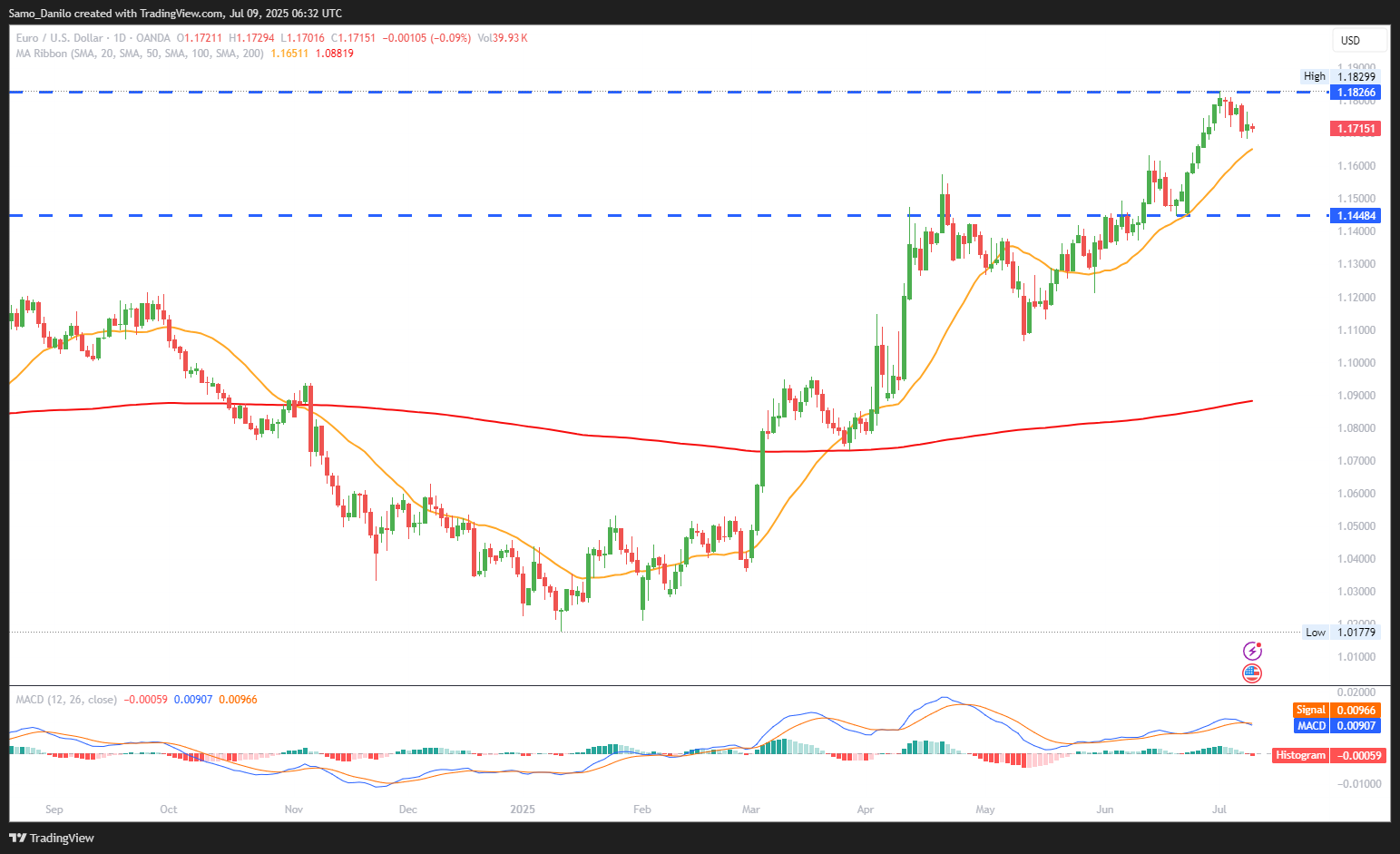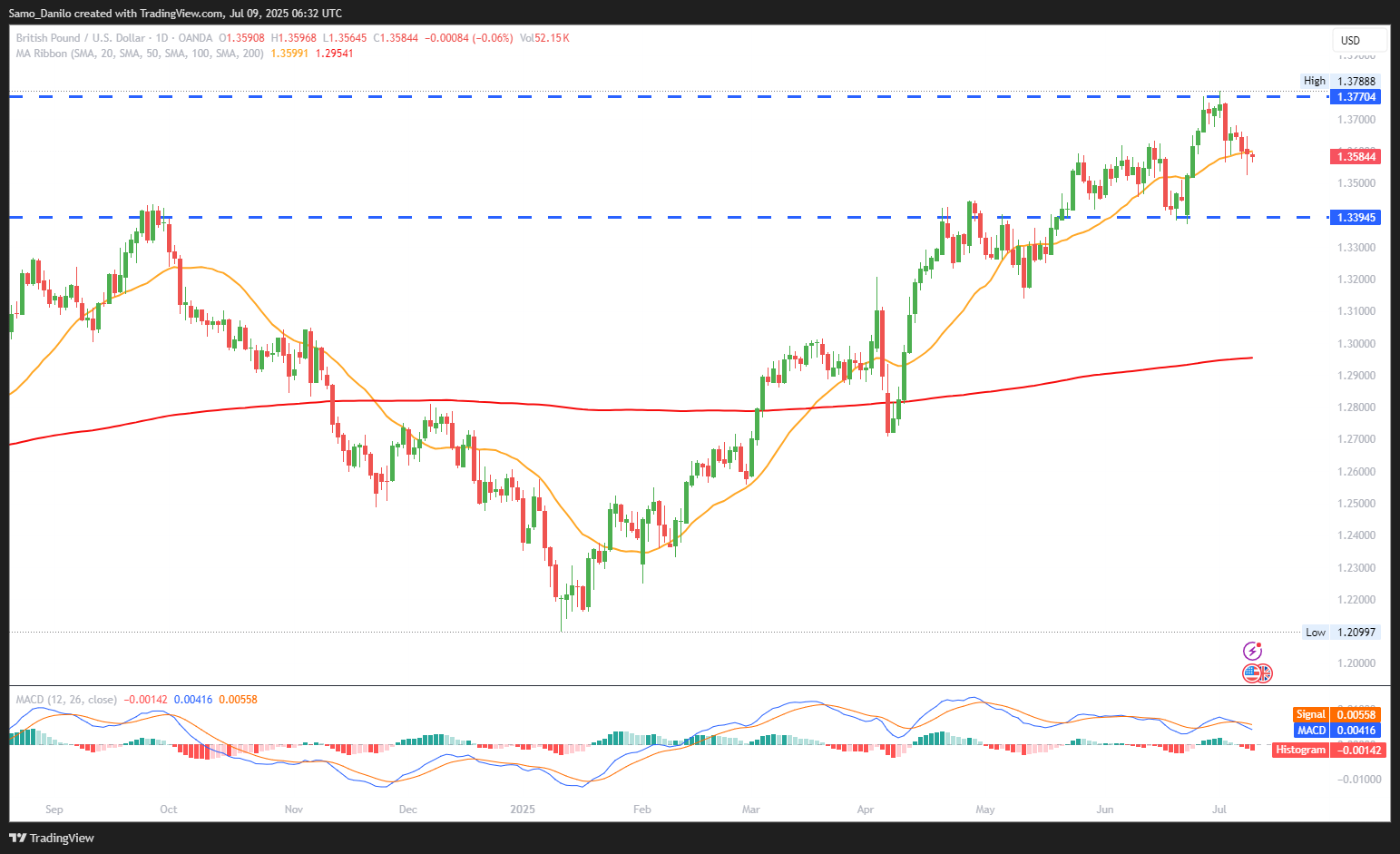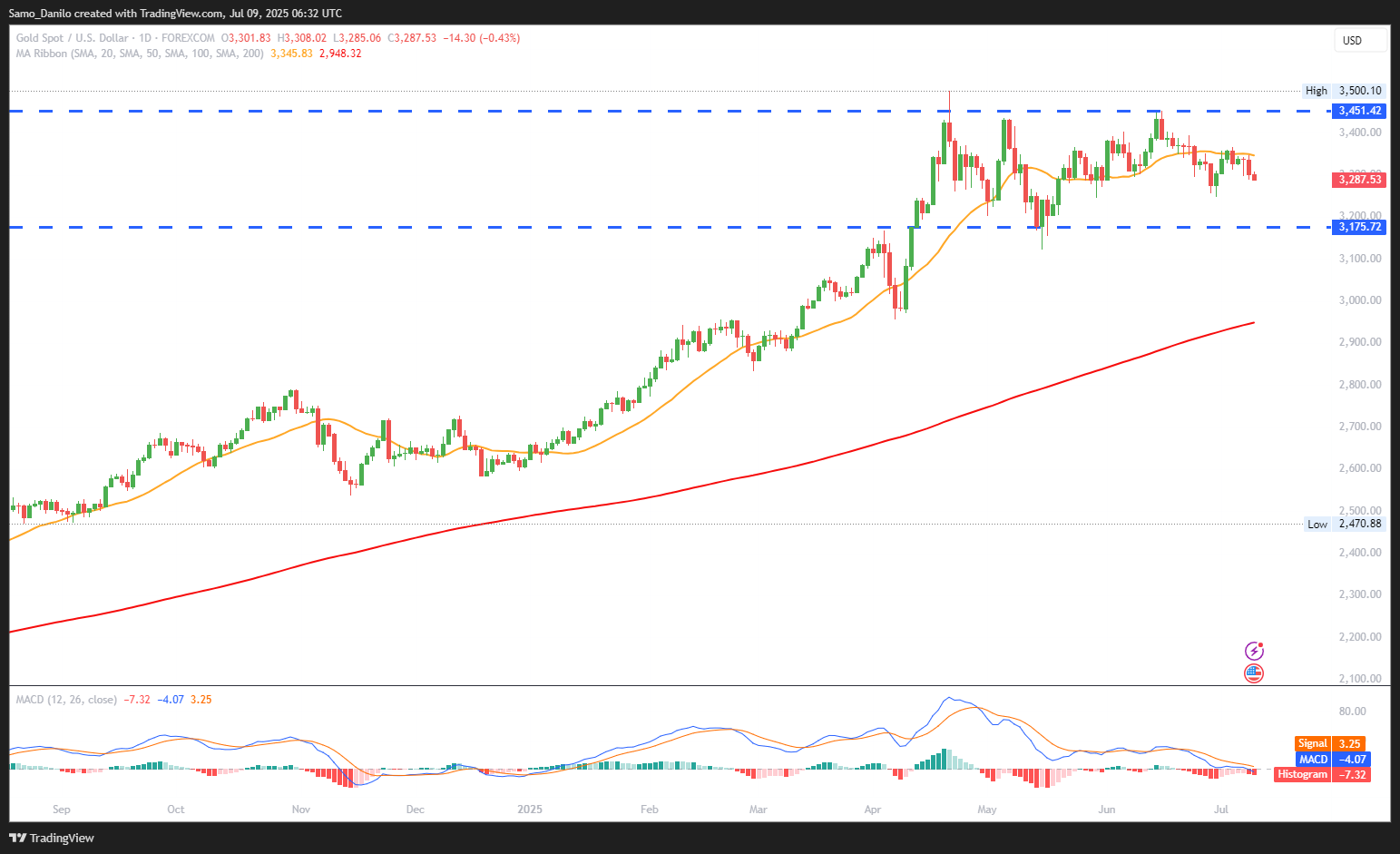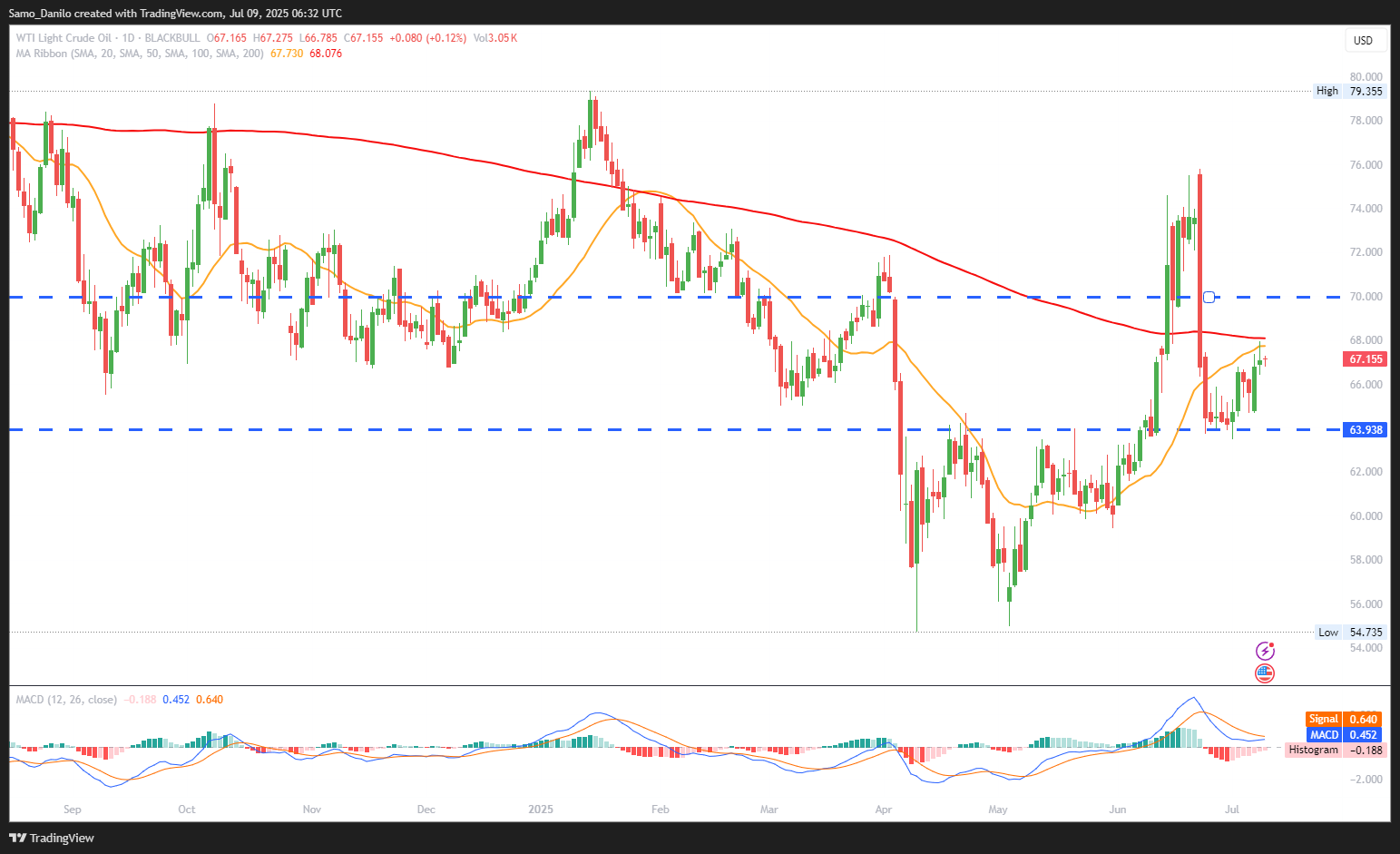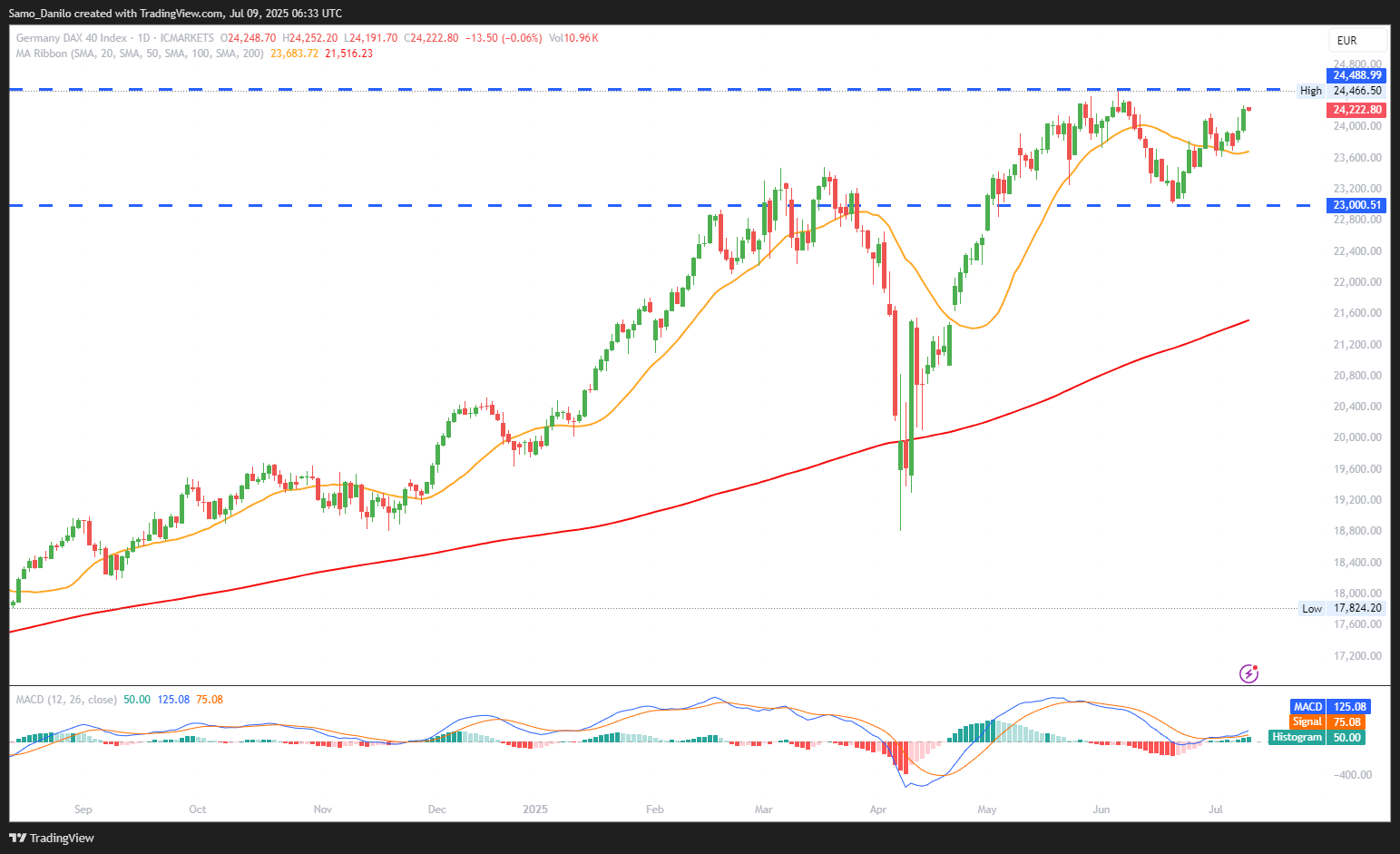EURUSD
- EUR/USD Price: The EUR/USD pair fell sharply to around 1.1705 during European trading on Wednesday, ending its recent stretch of gains as the US Dollar regained strength.
- US Tariffs: The Eurozone was excluded from Trump’s latest tariff threat letters, easing immediate trade worries. According to EU spokesman Olof Gill, negotiations with the US are advancing well, and a preliminary trade deal could be announced as soon as Wednesday.
- EU-US Communication: European Commission President Ursula von der Leyen had a positive call with President Trump, described as a “good exchange,” further boosting hopes for a compromise and reducing market anxiety around trade relations.
- Trump Pressure: US President Trump intensified his calls for immediate rate cuts, even suggesting Fed Chair Jerome Powell should resign. While adding to broader volatility, these comments kept market focus on potential US monetary easing.
- ECB Officials: A busy slate of ECB speakers, including Vice President de Guindos and Chief Economist Philip Lane, is expected. Their comments may provide fresh guidance on policy outlook, especially after recent softer inflation and mixed economic signals.
Closing statement: EUR/USD’s decline reflects a combination of renewed US Dollar demand and shifting rate expectations, despite easing EU-US trade tensions. Market participants will watch ECB commentary and potential US policy moves closely to gauge near-term direction.
GBPUSD
- GBP/USD Price: The GBP/USD pair continued its winning streak for a fourth consecutive session, holding just under the 1.3600 mark during Thursday’s European trading hours. The weaker US Dollar and market optimism are supporting the pound’s momentum.
- Fiscal Risks: The UK faces mounting fiscal risks following the Labour government’s new welfare bill, which proposes higher Universal Credit allowances. This measure is projected to increase the debt burden by £4.8 billion by 2029–2030, raising concerns about long-term fiscal sustainability.
- BoE Rate Cuts: Traders are increasingly confident that the Bank of England will cut rates in August, following June’s decision to hold rates steady at 4.25% but signaling a downward trajectory. This dovish shift keeps markets focused on upcoming economic data for further clues.
- Tariff Threats: US President Trump announced potential new tariffs on pharmaceuticals, semiconductors, and copper, targeting rates of around 50%. While not directly aimed at the UK, these measures contribute to wider global trade uncertainty.
- UK Economic Data: Investors await UK GDP and factory output data for May, due Friday. Consensus estimates suggest GDP rose 0.1% after April’s 0.3% decline, which could shape expectations for BoE policy and broader economic sentiment.
Closing statement: GBP/USD continues to climb on dollar weakness and policy optimism, but rising fiscal risks and the prospect of BoE rate cuts may limit further upside. Traders will closely watch Friday’s GDP data and global trade headlines for direction.
XAUUSD
- XAU/USD Price: Gold price (XAU/USD) fell to around $3,285 during Wednesday’s European session, marking a one-and-a-half-week low and signaling potential for further downside. Recent dollar strength and reduced safe-haven demand are weighing on gold.
- UN Warning: The UN trade agency cautioned about global economic instability tied to Trump’s new August 1 trade war deadline. While tariffs may support US inflation in the near term, they are expected to have a longer-term negative impact on growth, dampening future gold demand.
- Small Business Index: The US June NFIB Small Business Optimism Index came in at 98.6, slightly below the 98.7 forecast. Rising reports of excess inventories weighed on sentiment, reflecting possible softening in small business conditions.
- BRICS Summit: At the recent BRICS summit in Rio, emerging economies reaffirmed efforts to reduce reliance on the US Dollar ("de-dollarization"), potentially affecting global currency dynamics and long-term gold flows.
- FOMC Minutes: Markets are awaiting the FOMC minutes from the June 17-18 meeting, to be released Wednesday. With the Fed holding rates steady for a fourth time at 4.25%-4.50%, traders will look for hints on the path for rates and inflation — key drivers for gold.
Closing statement: Gold remains under pressure amid fading safe-haven demand and a stronger dollar, with further cues expected from FOMC minutes and global trade developments. While long-term structural shifts (like de-dollarization) could support gold, near-term sentiment is cautious.
CRUDE OIL
- Crude Oil Price: West Texas Intermediate (WTI) is trading around $67.20 in early European hours Wednesday. While the price is stable, upside momentum is capped following an unexpected build in US crude inventories.
- API Report: The American Petroleum Institute (API) reported a surprise increase of 7.1 million barrels in US crude oil stockpiles for the week ending July 4, contrasting with expectations for a draw. This inventory build dampens near-term bullish sentiment.
- Winter Forecast: Meteorologists forecast an especially severe winter, expected to push up demand for heating oil and diesel into Q4 2025 and Q1 2026. This outlook supports medium-term consumption, particularly in regions reliant on diesel for heating and transport.
- Geopolitical Risks: Geopolitical tensions resurfaced after a drone and speedboat attack off Yemen killed four crew members on a Greek-operated ship. This marks the second attack in a day, rekindling security risks on key shipping routes and potentially tightening global supply.
- EIA Data: Market participants are awaiting the US EIA weekly crude oil stockpiles report, due Wednesday. Confirmation of the API's large build or a divergence could determine short-term price trends and shape risk sentiment.
Closing statement: Crude oil prices remain steady above $67 despite rising inventories and renewed geopolitical risks. Traders will closely watch EIA data for immediate price cues, while harsh winter forecasts and Middle East tensions may support prices in the medium term.
DAX
- DAX Price: The DAX Index rose by 0.55% on Tuesday, building on Monday’s 1.2% advance to close at 24,074, as optimism over a US-EU trade deal outweighed weak German trade data.
- Trade Data: German exports fell 1.4% MoM in May, following a 1.7% decline in April, driven by a sharp 7.7% drop in shipments to the US. Imports dropped by 3.8% compared to a 3.9% increase in April, suggesting fading demand after earlier pre-tariff stockpiling.
- EU Readiness: Germany’s finance minister reiterated that the EU stands ready to retaliate if a fair trade agreement with the US cannot be reached. Despite this tough stance, market sentiment improved on hopes of avoiding Liberation Day tariffs.
- Index Stocks: Reduced tariff fears boosted banking and auto stocks. Commerzbank surged 4.75%, while Deutsche Bank rose 0.62%. In autos, BMW and Mercedes-Benz Group advanced 2.25% and 1.98%, respectively, with Volkswagen and Porsche also higher.
- US Fiscal Concerns: Rising worries over the US fiscal outlook added to market caution. The US public debt is nearing $30 trillion, with the 2025 deficit projected close to $2 trillion, fueling investor concerns about long-term global financial stability.
Closing statement: The DAX continues to gain on trade optimism, even as German export weakness underscores economic headwinds. Sector-specific rallies and fading tariff fears support near-term momentum, though global fiscal risks could weigh on sentiment longer term.
